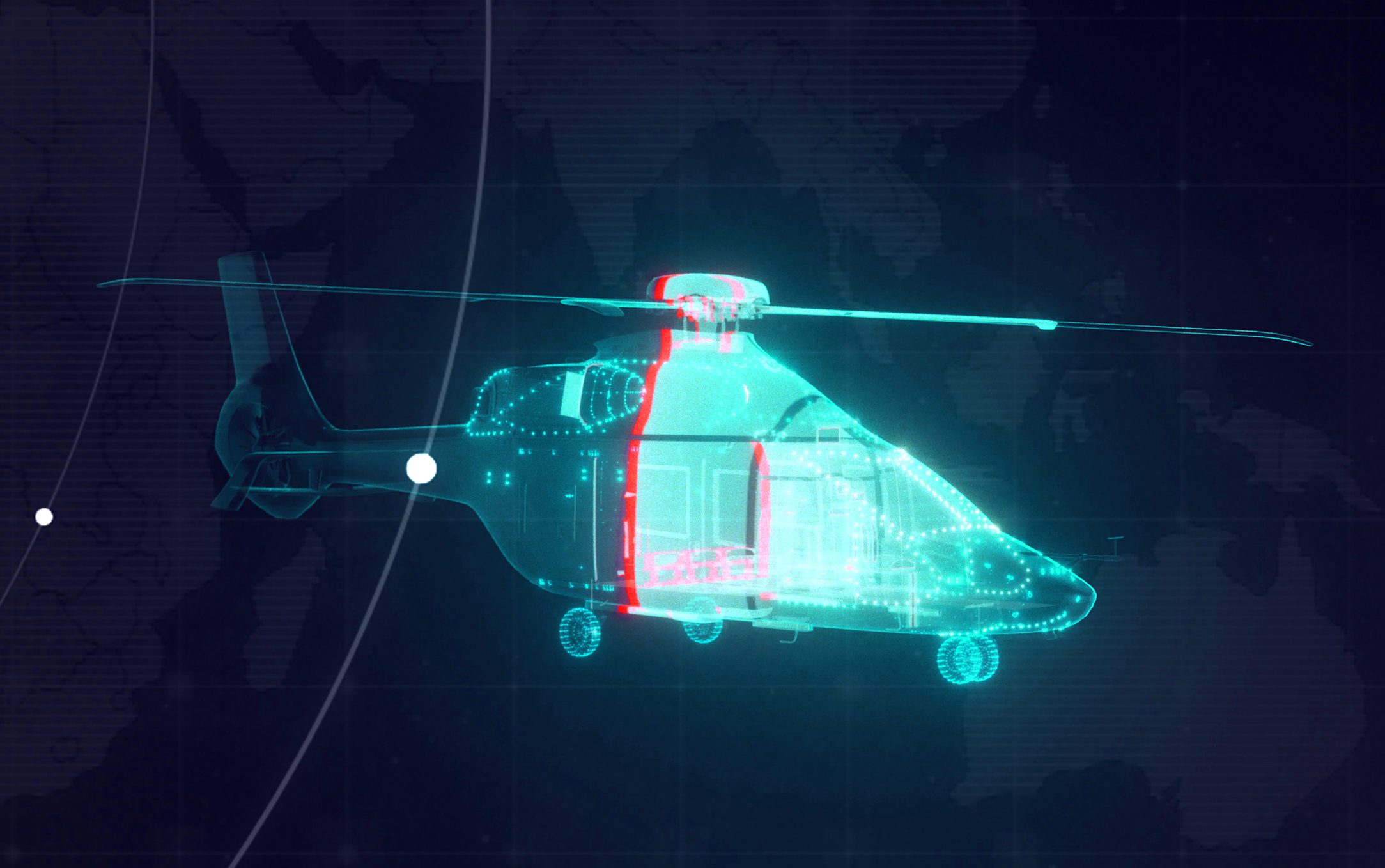Helicopter technology is pushing the boundaries of engineering ever further forward. Rotor aircraft have always been at the forefront of innovation, but in recent years, the sheer speed of new helicopter technology coming onstream has been remarkable.
Much of this has been influenced by the growth of Augmented Reality and AI, which we will discuss later. However, hardware has also come a long way from the early days of rotor development.
So where next? Are helicopter gadgets mere baubles, or do some of the new technologies and features really benefit operations and efficiency? Let’s look at the systems of the future that we could see in the next generation of helicopters and how they can benefit both operators and the public.
Where are we right now?
Creating the next generation of rotor aircraft is not a quick process. Because of the levels of cost and the intrinsic safety concerns involved, helicopter technology takes a long time to shift from the concept stage to actual installation and use.
Helicopter models tend to see a long service record, such as the Black Hawk, which first appeared in the 1970s and is only now starting to be replaced by newer developments. Despite this, the UH-60 will likely stay in service for at least 10-20 years. The simple reason is that it works – and works well.
What is moving forward, however, is the type of helicopter technology appearing in cockpits. The modular nature of many of these new developments and the fact that they can be grandfathered onto existing and already familiar tech makes the idea of advancing individual features within a tried and tested vehicle much more attractive. The technology can move forward at a much faster rate compared to developing an entirely new concept craft.
It’s also far more cost-effective and cheaper to develop pilot aids like Augmented Reality software. Installation is instant, training times are reduced, and the technology can begin to be far more effective in a much shorter space of time.
That being said, there is still plenty of development in the design of rotor aircraft, and some that may – if the proof of concept is successful – completely change the skies above us. There are even plans in development to remove the internal combustion engine entirely, but will it work? Let’s now look at what new helicopter technology is on the horizon and how innovation is pushing forward new ideas and even wholly new aircraft designs.
Virtual cockpits
VR or Virtual Reality has been around for a while, but so far, it has been (pretty much) limited to the entertainment industry. In recent years, however, it has taken on more practical applications, and VR helicopter simulators are now extensively used for training pilots before they take to the air.
In the next decade, VR could transition into the cockpits of actual aircraft, with the operator using a VR headset to fly the vehicle rather than looking out of the window. The ability to interlink a wealth of other technology into a VR headset is obvious and could be extremely beneficial.
The question right now is whether VR is at an appropriate level of development to make the leap or if there are still too many safety concerns for VR to become the main method of piloting a helicopter.
Long-range capabilities and more fuel-efficient operations
Modern helicopters suffer from one disadvantage – range time. Because they are so fuel-thirsty, the average helicopter can only spend a limited amount of time in the air before returning to base to refuel. So, in the future, long-range capabilities and more fuel-efficient operations will be high on the agenda of new helicopter technology.
One option is the Single Engine Operative (SEO) system in dual-engine vehicles. This will allow a helicopter to disengage one of its engines while cruising to save fuel without affecting stability or performance and then restart it quickly when required. It’s the avionic version of hypermiling in a car.
While SEO is being fine-tuned (and bearing in mind that it only works if you have a twin-engine craft!), a more achievable option is to reduce the burden put on the engine by shifting to lighter construction methods. This includes developing supercritical transmission systems with fewer parts constructed from lighter materials.
Airbus Helicopters’ Clean Sky 2 concept incorporates all this, creating a high-speed rotorcraft that still uses proven elements such as the H155 main rotor and two RTM 322 engines but also adds innovations such as SEO.
Flight-by-wire and autonomous capabilities
Flight-by-wire is another concept that has been around for a while. But while this system has been proven to be reliable, safe and effective, the amount of hardware involved in installing a flight-by-wire system into an aircraft adds considerably to the overall weight.
However, FBW and autonomous capabilities are becoming increasingly prevalent in fixed-wing aircraft and are gradually filtering over to rotor craft. This allows the pilot to become more active in a mission management role and use AR and AI assistance to complement their skill set. The big benefit here is the reduction in pilot fatigue.
Sleeker profiles
The design of the helicopter cockpit hasn’t changed much. However, as operators look for greater fuel efficiency and faster speeds, the main goal is to have a sleeker, more refined cockpit design. While aesthetics are always important, performance and stability are far more mission-critical. Concepts on the table currently include aircraft with no horizontal stabilisers and unusual tail rotor designs.
Bell Helicopters is leading the way with the idea of an electronically actuated anti-torque system. This would use thrust-vectored air pushed by fans integrated into the tail boom. Not only would this cut noise and reduce weight (and therefore extend flight times and increase efficiency), but it would also create a sleeker, more refined profile and reduce the turbulence a tail rotor creates. This, in turn, would make the aircraft easier to fly.
Electric helicopters
We cannot discuss the future of helicopter technology without investigating the possibility of eliminating the petrol engine entirely and moving to electric flight. Of course, Tesla and their futuristic Model H concept are at the forefront of this. Using a front exoskeleton fitted with four mini rotors, the idea of the electric helicopter is plausible. It would be light, manoeuvrable, and very quiet.
The inspiration has obviously come from drones, but one major element holding electric helicopters back is battery technology. Current batteries simply cannot keep an aircraft in the air for any length of time, and they’re also very heavy, which could scupper an aircraft’s lightness, efficiency, and manoeuvrability. Once battery technology catches up, though, we could see commercial electric helicopters in the skies above us.
Augmented Reality in the air
Helicopter technologies, such as Heads-Up displays and Augmented Reality, are already making an appearance in more advanced operating systems. However, the surface has only just been scratched with AR and AI, and in the future, these two technologies will play a much more significant role in the operation of rotor craft.
The big advantage of AR is that it is designed as a modular system, allowing the operator to customise their AR to suit their operation parameters. Small, compact and – critically – intuitive, AR utilises existing technology that operators are already familiar with, reducing training times and allowing these systems to be used straight out of the box.
FlySight’s innovative OPENSIGHT PED technology is at the cutting edge of AR with a modular and open integration approach to helicopter cockpit technology. By integrating a geo-exploitation toolbox into existing helicopter systems, operators find it much easier and quicker to carry out mission data analysis (which can also be done back at base in real-time), as well as terrain mapping, interpretation and target recognition.
Using OPENSIGHT in civilian aviation is particularly important in SAR and law enforcement. However, elements of the system, including terrain mapping and avoidance systems, weather radar, and so on, could also be integrated into commercial rotor aircraft.
The next ten years
The consensus is that over the next ten years, helicopter technology will progress to the point where Augmented Reality, AI, and autonomous operations will lead in rotary flight operations. While pilots will not become redundant, their role will change from actively flying the aircraft to a more mission-management role, similar to that you would find in commercial fixed-wing aircraft.
Whether the actual look of helicopters will change much is still an open question. The idea of the anti-torque system, as developed by Bell Helicopters, could be the biggest game-changer when it comes to altering the shape of aircraft. But it’s interesting to note that the US Army still plans to retain the UH-60 Black Hawk for at least another ten years. So, the next decade will most likely see a transition from traditional helicopter designs to the next generation of aircraft.
You can read more about our role in developing the next generation of helicopter technology and how OPENSIGHT solutions are transforming rotary flight here. You can also contact us to find out more and discuss your own needs for both military and civilian operations.
Continues to delve into innovative helicopter technologies with insights into:
✔Military Helicopter Technology





